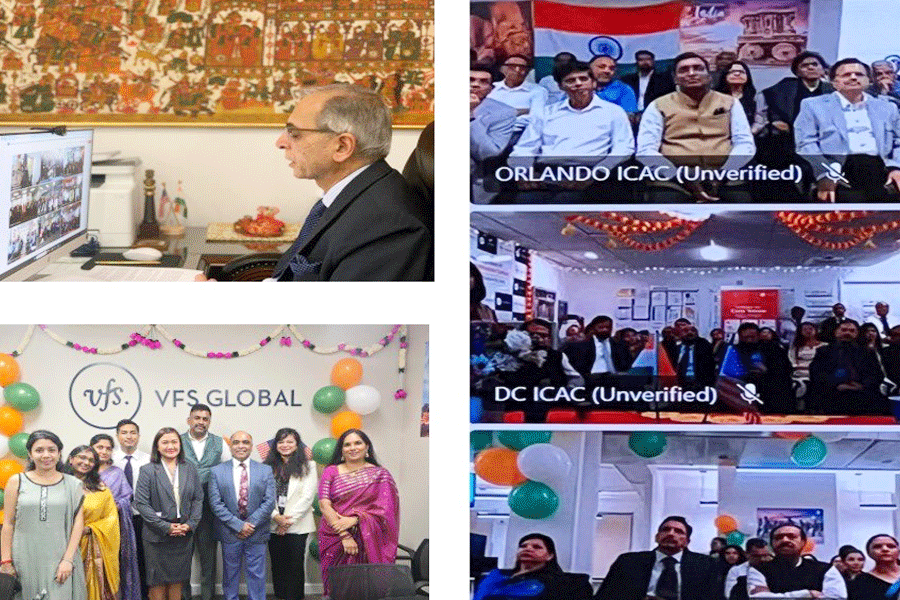
RITUPARNO GHOSH: CINEMA, GENDER AND ART Edited by Sangeeta Datta, Kaustav Bakshi and Rohit K. Dasgupta, Routledge, Rs 995
Imagine the act of 'choosing' an outfit as a crude metaphor for 'performing' your gender identity. Although it might appear to some that this act of 'choosing' is a free one, critical theory reminds us, time and again, that our ability to 'perform' our gender is always already limited by the existing social realities. In other words, like the metaphorical act of 'choosing' a dress, our gender 'performance' too is an act of limited improvisation within a scene of constraint.
For the life of Rituparno Ghosh, this sartorial analogy must have had special relevance. In his final years, he appeared on the public stage in colourful dresses, complete with makeup and jewellery, as a conscious attempt to celebrate gender fluidity. However, if some of the contributors of this volume are to be believed, Ghosh's temerity in challenging the Bengali bhadralok's gender conformity was offset by his unwillingness to offend his class sensibilities. Therefore, he was never able to explore the truly subversive side of contemporary queer politics. Limitations such as these are explored with great insight in the remarkable anthology, Rituparno Ghosh: Cinema, Gender and Art, edited by Sangeeta Datta, Kaustav Bakshi and Rohit K. Dasgupta. The fact that the editors and the contributors are self-proclaimed aficionados of Ghosh's oeuvre does not come in their way of critically analysing aspects of his craft, his stardom and his contribution to the politics of sexual identity.
Ghosh appeared at a time when Bengali cinema had reached a moribund stage. With the death of both Satyajit Ray and Uttam Kumar, it was split sharply into insipid art house cinema and the garish melodramas produced specifically to cater to non-elite audiences. Middle-class viewers also took comfort in the benign chamber dramas of satellite television. Ghosh, who was quite adept at reading the pulse of his audience, therefore, chose to restrict himself within the confines of the bourgeois living room and deal with narratives that only addressed issues pertaining to his own class. However, even within the constricting space of middle-class homes, he was able to pull off the veneer of happy marriage to bring out themes of marital discord, patriarchal violence, and the lack of women's agency. In many of his films, such as Dahan and Chokher Bali, we see his female protagonists walk out on their respective partners and suitors to discover the greater world outside. Even those who choose to stay inside acquire a heightened sense of the self like Bonolota in Bariwali, who, in spite of having been exploited by the film director, Dipankar, is able to forget and forgive, as she moves ahead in her life.
In later years, Ghosh's feminist sensibilities were to change into a more radical queer politics seeking to challenge heteronormativity and compulsory heterosexuality. His public persona as a cultural icon of the bhadralok class certainly helped. In his perceptive essay, Sumit Dey argues how the public image of Ghosh acquired a star-like quality that emerged not only from his work but also from his presence in the media. While his films had already achieved for him the status of a celebrity director, he extended his cultural commentary through his television chat shows like Ebong Rituparno and Ghosh & Company and his editorials in Robbar, where he talked about a range of social and political issues. But, it was also an opportunity for him to play out his queerness through subtle changes in his appearance and in his sartorial choices, through which he tried to upset the normative codes of dressing.
Ghosh's final 'transgressive act' seems to be his Queer trio - a trilogy of films dealing with queer subjects and featuring him in principal roles. However, for some of the essayists in this volume, like Kaustav Bakshi, Parjanya Sen and Aniruddha Dutta, these films, in spite of their radical potential, stop short of fully exploring the possibilities of queer politics. According to Bakshi and Sen, Ghosh's radicalism is contained within the comfort zones of the middle class, while his films speak to their viewers only through certain shared cultural codes, aesthetic sensibilities and material objects that are easily relatable and immediately discernible to them. This, argues Sayandeb Chowdhury, is reflective of the larger process of de-politicization which Bengal seems to have undergone with the coming of liberalization. Similarly, the access to non-normative forms of sexuality (through expensive means such as sex reassignment surgeries) is only available to people like Ghosh and the privileged characters he portrays on the screen. For Ghosh's subaltern counterparts, it remains a distant dream.
With the haze of lurid public gossip regarding his sexuality, his outlandish dressing style and his alleged attempts at hormonal therapy, it is difficult to reclaim Ghosh, the artist, and be truly objective about his work. Whatever might have been his limitations, his films still remain a mirror to our secret hypocrisies, our acquiescence in perpetuating skewed power structures and our willingness to take part in insidious forms of violence beneath the cover of bhadralok gentility. There is no other book that brings out these themes with greater theoretical clarity and empirical depth than this one. 'Rituda', had he been alive, would have been proud.










